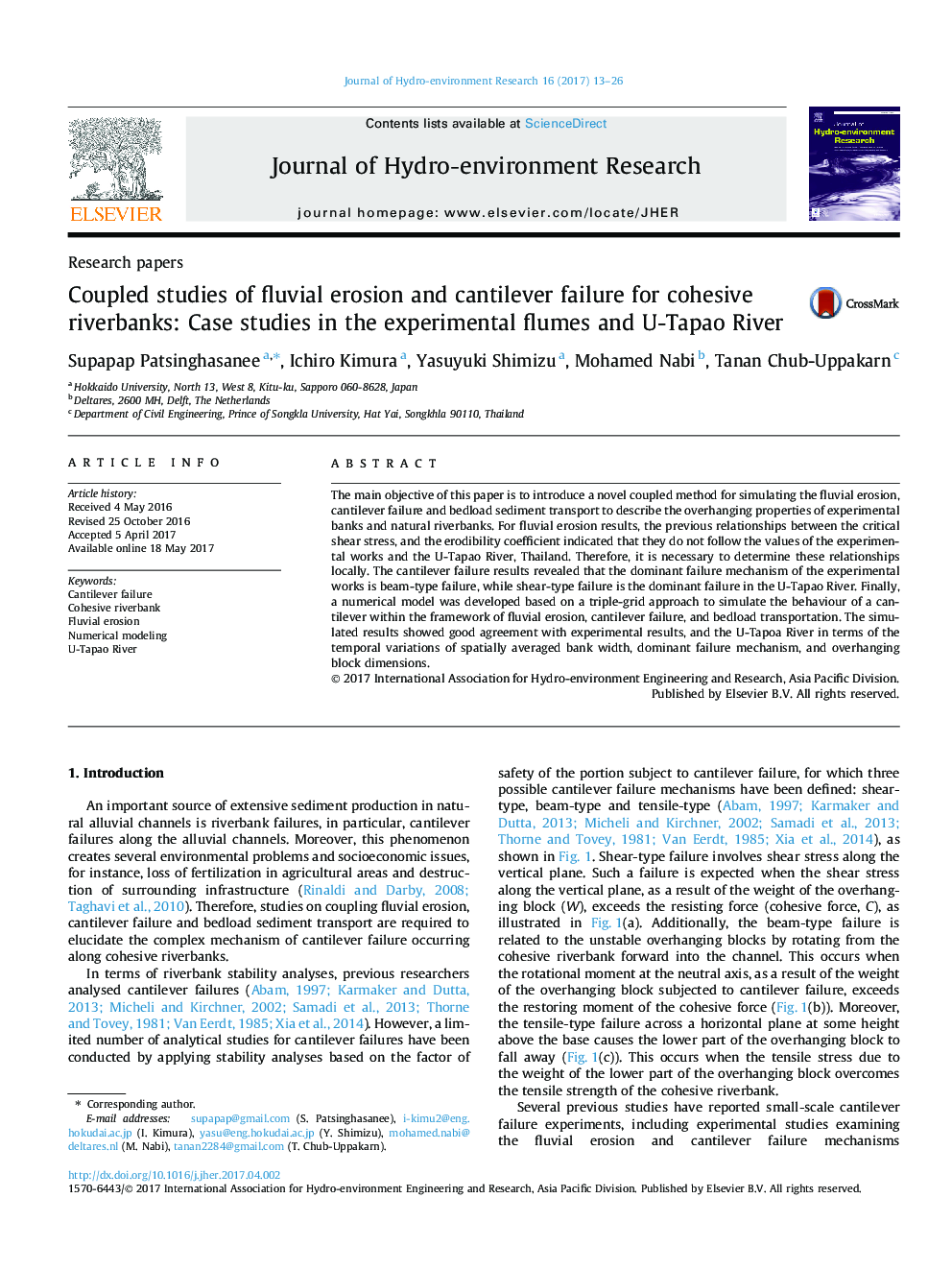| Article ID | Journal | Published Year | Pages | File Type |
|---|---|---|---|---|
| 5759877 | Journal of Hydro-environment Research | 2017 | 14 Pages |
Abstract
The main objective of this paper is to introduce a novel coupled method for simulating the fluvial erosion, cantilever failure and bedload sediment transport to describe the overhanging properties of experimental banks and natural riverbanks. For fluvial erosion results, the previous relationships between the critical shear stress, and the erodibility coefficient indicated that they do not follow the values of the experimental works and the U-Tapao River, Thailand. Therefore, it is necessary to determine these relationships locally. The cantilever failure results revealed that the dominant failure mechanism of the experimental works is beam-type failure, while shear-type failure is the dominant failure in the U-Tapao River. Finally, a numerical model was developed based on a triple-grid approach to simulate the behaviour of a cantilever within the framework of fluvial erosion, cantilever failure, and bedload transportation. The simulated results showed good agreement with experimental results, and the U-Tapoa River in terms of the temporal variations of spatially averaged bank width, dominant failure mechanism, and overhanging block dimensions.
Related Topics
Life Sciences
Agricultural and Biological Sciences
Agricultural and Biological Sciences (General)
Authors
Supapap Patsinghasanee, Ichiro Kimura, Yasuyuki Shimizu, Mohamed Nabi, Tanan Chub-Uppakarn,
